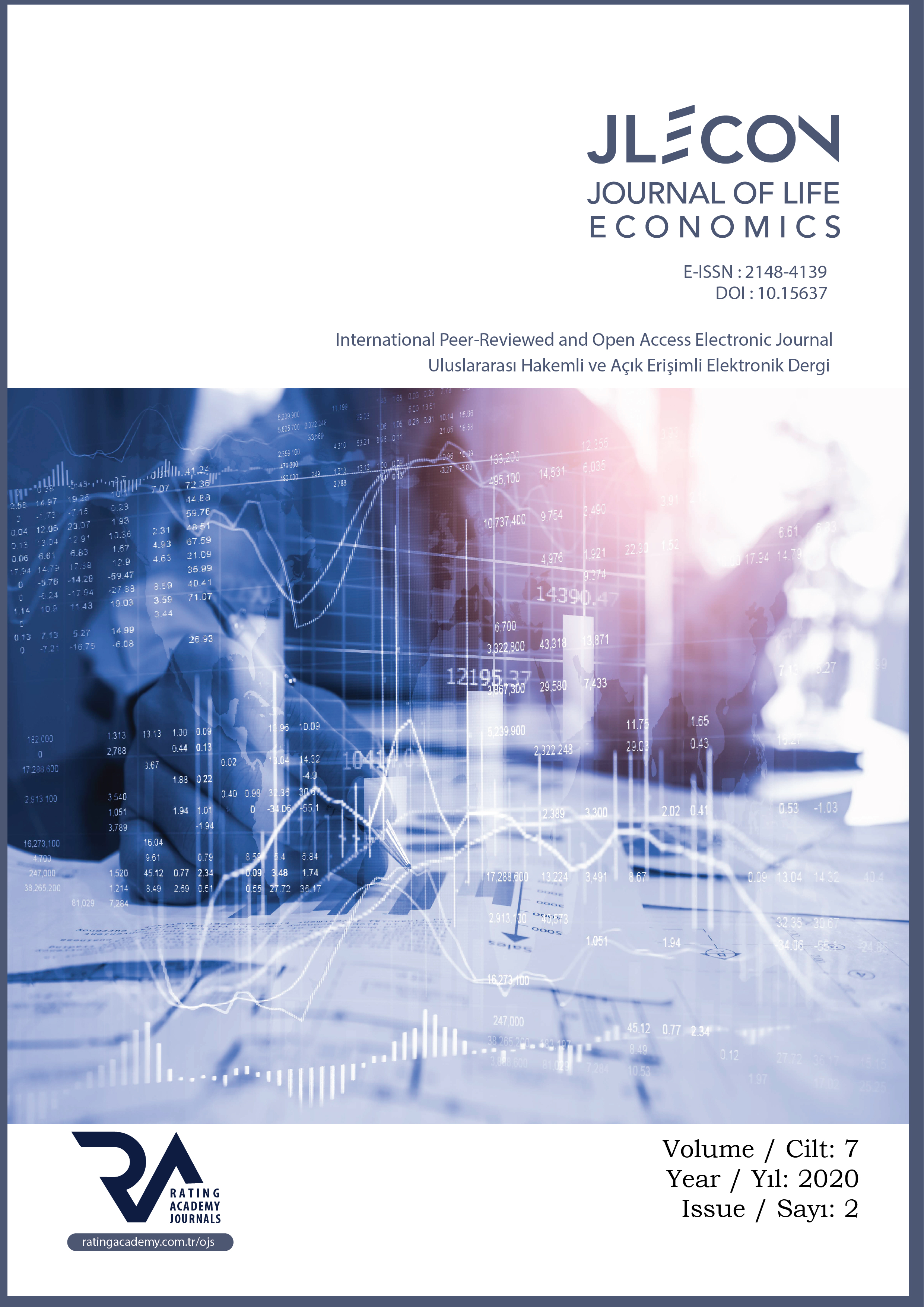FISCAL DEFICITS AND INTEREST RATES IN BRICS ECONOMIES: TESTING THE KEYNESIAN-RICARDIAN OPPOSITION
DOI:
https://doi.org/10.15637/jlecon.7.012Keywords:
Fiscal deficits, interest rates, Gross Domestic Product, inflationAbstract
This current study was aimed at exploring the consequential effects of both short- and long-term interest rates on fiscal deficits in BRICS economies. The panel vector error correction model (PVECM) techniques were employed to capture both long-run and short-run dynamics between variables. Using annual panel data, spanning the period 1995 to 2019, which was derived from OECD and IMF, this current study discovered a positive and significant relationship between both short- and long-term interest rates in BRICS economies. Moreover, the results of the study revealed a negative and significant relationship between GDP and fiscal deficits. These results confirmed that fiscal deficits hypothetically crowd out private investment and consumption through increased effects on interest rates. Therefore, the implementation of policy mix (interaction between monetary policy and fiscal policy) was recommended to unnecessary or unproductive government expenditure that may result in increased fiscal deficits and interest rate in BRICS economies.
Downloads
References
AL-MAJALI, A. (2018). Crowding Out Effect of Public Borrowing: The Case of Jordan. international Review of Management and Marketing, 8(1):119-125.
ANG, S. (2016). Comparing analysis of the BRICS trade. Contemporary Studies in Economic and Financial Analysis, 102(1):20-29.
ASTERIOU, D. & Hall, S. (2011). Applied Econometrics, England: Palgrave Macmillan.
BARRO, R.J. (1989). The Ricardian Approach to Budget Deficits. Journal of Economic Perspective, 3(2):55-72.
BARRO, R.J. (1990). Government spending in a simple model of endogenous growth. Journal of Political Economy, 98(5): 103-125.
BIZA, R.A, Kapingura, F.M & Tsegaye, A. (2015). Do budget deficits crowd out private investment? An analysis of the South African economy. International Journal of Economic Policy in Emerging Economies, 8(1): 52-76.
BONGA-BONGA, L. (2011). Budget Deficit and Long-Term Interest Rate in South Africa. African Journal of Business Management, 6: 3954-3961.
BRICS. (2013). The study of Brazil, Russia, India, China and South Africa with special focus on Synergies and complementary. United States of America: Oxford University Press.
BRICS. (2017). Key issues likely to dominate the 2017 BRICS Summit. Republic of South Africa. Centre for International Governance innovation.
BRICS (2018). The 2018 BRICS Finance Ministers and Central Bank Governors’ Outcomes. Republic of South Africa.
DAI, Q & PHILIPPON, T. (2004). Government Deficits and Interest Rates: A No-Arbitrage Structural VAR Approach. AFA 2005 Philadelphia Meetings. Available at SSRN: https://ssrn.com/abstract=642141 or http://dx.doi.org/10.2139/ssrn.642141.
FISHER R. A. (1932). Statistical Methods for Research Workers, Edinburgh: Oliver & Boyd.
IM, K. S, PESARAN, M.H & SHIN, Y. (2003). Testing for unit roots in heterogeneous panels. Journal of econometrics, 115(1): 53-74.
JOHANSEN, S. (1988). Statistical Analysis of Cointegrating Vectors. Journal of Economic Dynamic and Control, 12:231-54.
BAYAT, T, KAYHAN, S & SENTURK, M. (2012). Budget deficits and interest rates: An empirical analysis for Turkey. Eurasian Journal of Business and Economics, 5 (9): 119-128.
KELIKUME, I. (2016). The effect of budget deficit on interest rates in the countries of sub-Saharan Africa: A panel VAR approach. The Journal of Developing Areas, 50 (6): 105-120.
KEYNES, J.M. (1936). The General Theory of Interest, Employment and Money, London: Macmillan.
LEVIN, A, LIN, C.F & CHU, C.S.J. (2002). Unit root test in panel data: asymptotic and finite sample properties. Journal of Econometrics, 108(1):1-24.
MOLEFE, K & CHOGA, I. (2017). Government Expenditure and Economic Growth in South Africa: A Vector Error Correction Modelling and Granger Causality Test. Journal of Economics and Behavioral Studies, 9(4):164-172.
MOLEFE, K & MAREDZA, A. (2017). Budget Deficits and Economic Growth: A Vector Error Correction Modelling of South Africa. Journal of Economics and Behavioral Studies, 9(2): 215-223.
MUKHTAR, T & ZAKARIA, M. (2008). Budget deficits and interest rates: An empirical analysis for Pakistan. Journal of Economic Cooperation, 29(2):1-14
National Treasury. (2012). BRICS report of 2012. [online] available from http://www.treasury.gov.za/brics/Documents/brics-report.pdf
OBI, B, NUREDEEN, A & WAFUNE, G. (2009). An empirical investigation of the Fisher Effect in Nigeria: A cointegration and error correction approach. International Review of Business Research papers, 5(1): 69-109.
ŞEN, H & KAYA, A. (2014). Crowding-Out or Crowding-In? Analysing the Effects of Government Spending on Private Investment in Turkey. PANOECONOMICUS, 6(1): 631-651
Downloads
Published
Versions
- 2020-08-05 (2)
- 2020-08-05 (1)
How to Cite
Issue
Section
License
Copyright (c) 2020 Jolistence Publications

This work is licensed under a Creative Commons Attribution 4.0 International License.
When the article is accepted for publication in the Journal of Life Economics, authors transfer all copyright in the article to the Holistence Publications.The authors reserve all proprietary right other than copyright, such as patent rights.
Everyone who is listed as an author in this article should have made a substantial, direct, intellectual contribution to the work and should take public responsibility for it.
This paper contains works that have not previously published or not under consideration for publication in other journals.













